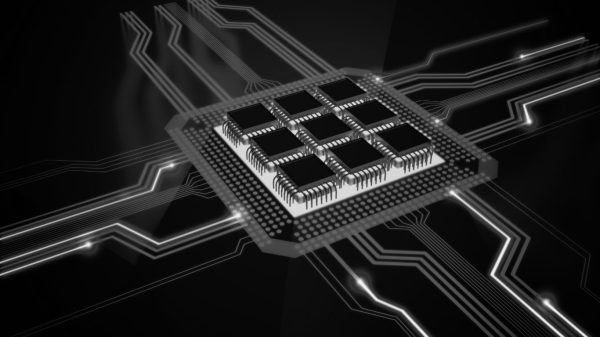Network security is a broad concept that encloses an extensive range of technologies, devices, and processes. Its most basic form is a set of rules and configurations that use software and hardware technologies to protect the integrity, confidentiality, and accessibility of computer networks and data.
Any action aimed at safeguarding the accessibility and integrity of your network and data is referred to as network security. It combines hardware and software technologies. It detects and prevents a wide range of threats from accessing or spreading on your network.
Get Our FREE Networking Security Checklist
How does Network Security Work?
Authentication and authorization are two processes that are central to network security. The first step, authentication, is similar to how we use access cards to ensure that only those with the right to enter a building do so. In other words, authentication ensures that the user attempting to access or join the network is indeed a member of the network, preventing unauthorized intrusions.
The following step is an authorization. This procedure determines the level of access that will be given to the recently authenticated user. For example, the network administrator requires access to the entire network, whereas those working within it are likely to demand access to only specific areas of the network. The process of ascertaining the level of access or permission level based on the network user’s role is called authorization.
Benefits of Network Security
Enterprises cannot exist in the absence of network security because the threats posed by hackers, disgruntled employees, untrained employees, and others are simply too numerous to be dealt with without proper defense. Given the fast-changing cybersecurity threat landscape, network security is paramount today. A few benefits of Network Security include the following:
Get Our FREE CCTV/Surveillance Checklist
- Confidential Data Protection: Network security is more than just regulating what enters and leaves a network; it is also about protecting its presence. That is the information it contains. Enterprises typically have a large amount of confidential data that, if leaked, can jeopardize their businesses. Network security can help to prevent such data security breaches.
- Computer Longevity: By protecting your network against various security threats such as malware, DDOS attacks, computer hacking, and so on, you are increasing the longevity of your computers. Because the safer your network, the better the condition of your computers.
- Closed Environment Safe From The Internet: Network security provides a closed environment that is safe from the internet and other external security threats. This is especially true for private networks.
Types of Network Security
Firewalls
As the name implies, firewalls serve as a barrier between untrusted external networks and your trusted internal network. Administrators typically set up a set of clearly delineated rules that either block or allow traffic onto the web. For example, Forcepoint’s Next Generation Firewall provides seamless and centralized network traffic management, whether physical, virtual, or cloud-based.
E-mail Security
E-mails act as entry points into any network. Simply infect them with malware, and they can infect the entire network with a simple yet malicious attachment. As a result, e-mail security tools should be included in your network security program. An e-mail security application blocks incoming attacks and limits outbound messages to prevent the loss of sensitive data.
Anti-Malware and Antivirus software
Antivirus and antimalware software shields a company from a variety of malicious software, such as viruses, ransomware, worms, and trojans. The best software not only scans and tracks files upon network entry but also continuously scans and tracks files. Antivirus software is a type of software that protects a computer system from viruses. It detects and eliminates viruses in computer systems. Antimalware is a software program that protects computer systems from all types of malware, such as viruses, trojans, worms, and so on. It safeguards the computer system against all kinds of malware.
Application Security
Another security feature that supplements good patching is an essential network security component. Because all applications include security flaws, they require this additional layer of protection.
Access Control
Your network should not be accessible to every user. To keep potential attackers out, you must recognize each user and device. Then you can put your security policies into action. Noncompliant endpoint devices can be blocked or given limited access. This is known as network access control.
Behavioral Analytics
To detect abnormal network behavior, you must first understand what normal network behavior looks like. Behavioral analytics tools see activities that differ from the norm. Your security team will then be able to identify better markers of compromise that may indicate a problem and quickly rectify threats.
Data Loss Prevention
Organizations must ensure that their employees do not send sensitive data outside the network. DLP technologies can prevent people from uploading, forwarding, or even printing essential information in an unsafe manner.
Get Our FREE CCTV/Surveillance Checklist
Intrusion Prevention System
An intrusion prevention system (IPS) actively blocks attacks by scanning network traffic. A vulnerability is a weakness in a software system, for example, and an exploit is an attack that takes advantage of that vulnerability to gain control of that system. When an exploit is announced, attackers frequently have a window of opportunity to exploit that vulnerability before the security patch is implemented. In these cases, an Intrusion Prevention System can be used to stop these attacks quickly.
Mobile Device Security
Cybercriminals are increasingly aiming at mobile devices and apps. 90 percent of IT organizations may endorse corporate applications on personal mobile devices within the next three years. Of course, you must control which devices can connect to your network. You must also configure their connections in order to keep network traffic private.
VPN
A virtual private network encrypts the connection between an endpoint and a network, which is frequently over the internet. A remote-access VPN typically employs IPsec or Secure Sockets Layer to authenticate communication between the device and network.
Get Our FREE Networking Security Checklist
Wireless Security
Wireless networks are less secure as compared to wired networks. Installing a wireless LAN without strict security measures is akin to putting Ethernet ports everywhere. You must use products explicitly designed to protect a wireless network to prevent an exploit from taking hold.
Any company that works with networked data and systems should prioritize network security. Network security can not only protect assets and data integrity from external attacks, but it can also manage network traffic more efficiently, improve network performance, and assure secure data sharing between employees and data sources.










